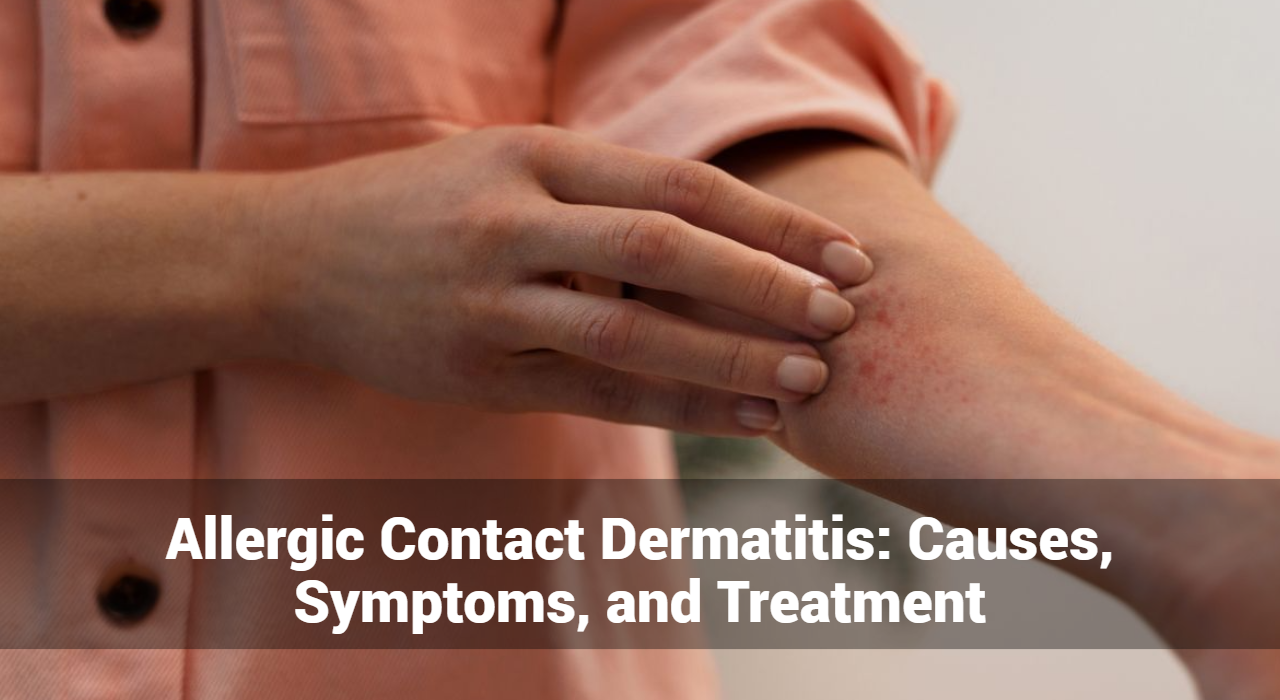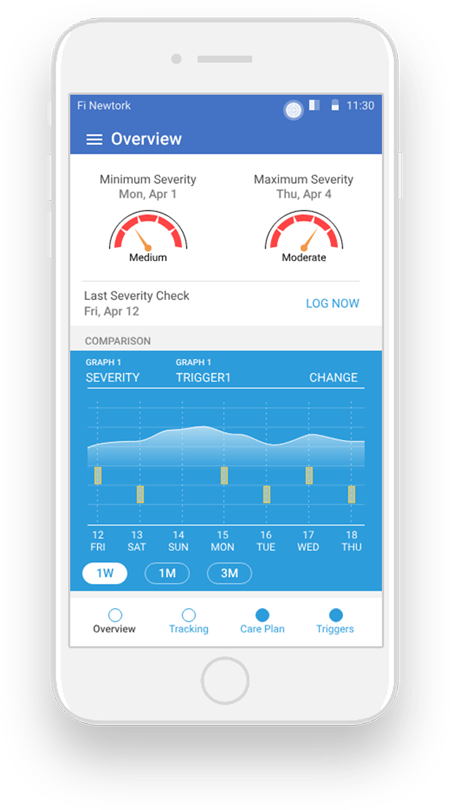Allergic Contact Dermatitis: Causes, Symptoms, and Treatment

Allergic Contact Dermatitis (ACD) is a prevalent skin condition that significantly impacts quality of life. It arises from an allergic reaction when the skin comes into contact with specific substances, known as allergens. Understanding the causes, symptoms, and treatments of ACD is crucial for effective management and prevention. This article provides an in-depth look at ACD, focusing on its causes, clinical manifestations, diagnostic methods, and treatment options.
What is Allergic Contact Dermatitis?
Allergic Contact Dermatitis is an inflammatory skin condition caused by an allergic reaction to a substance in contact with the skin. Unlike irritant contact dermatitis, which occurs due to direct chemical damage to the skin, ACD is an immune-mediated response. This means that the body’s immune system reacts against a specific substance, leading to skin inflammation.
What Causes of Allergic Contact Dermatitis?
Common Allergens
01. Metals
- Nickel: Found in jewelry, belt buckles, and eyeglass frames, nickel is one of the most common causes of ACD.
- Cobalt: Often used in metal alloys and found in certain dyes and pigments.
- Chromium: Present in cement, leather products, and some paints.
02. Fragrances
- Used in perfumes, cosmetics, soaps, and detergents. Fragrances are a common cause of ACD, and many people are sensitive to them.
03. Preservatives
- Formaldehyde: Used in cosmetics, disinfectants, and household cleaning products.
- Methylisothiazolinone: Found in various personal care products and industrial applications.
04. Rubber Chemicals
- Chemicals used in the production of rubber gloves, footwear, and other rubber products can cause ACD.
05. Plant Extracts
- Poison Ivy, Oak, and Sumac: Contact with these plants can cause a severe allergic reaction in sensitive individuals.
06. Topical Medications
- Neomycin: An antibiotic found in many over-the-counter creams.
- Benzocaine: A local anesthetic used in various topical products.
Occupational Allergens
Certain professions are at higher risk of developing ACD due to frequent exposure to specific allergens:
01. Hairdressers and Cosmetologists
- Exposed to hair dyes, bleaches, and preservatives.
02. Healthcare Workers
- Regular use of latex gloves and disinfectants.
03. Construction Workers
- Contact with cement, epoxy resins, and other building materials.
04. Agricultural Workers
- Exposure to pesticides, fertilizers, and plant allergens.
Environmental and Lifestyle Factors
01. Climate and Pollution
- Environmental factors like humidity and air pollution can exacerbate ACD symptoms.
02. Personal Care Products
- Frequent use of fragranced and preservative-laden products can increase the risk of ACD.
Track and Manage your Eczema treatment using a comprehensive Eczema App
Download Eczemaless now
Symptoms of Allergic Contact Dermatitis
Acute Symptoms
- Redness (Erythema): The affected area of the skin often becomes red and inflamed. This redness is a result of increased blood flow to the area as the body responds to the allergen.
- Itching (Pruritus): Intense itching is one of the hallmark symptoms of ACD. This itching can be severe and persistent, leading to significant discomfort.
- Swelling (Edema): The skin may swell, especially at the site of allergen contact. This swelling is due to the inflammatory response triggered by the immune system.
- Blisters and Vesicles: Small fluid-filled blisters or vesicles can form on the skin. These blisters may burst, releasing their contents and potentially leading to crusting and oozing.
- Pain and Tenderness: The affected area may become painful or tender to the touch. This symptom often accompanies severe cases of ACD.
- Burning Sensation: Some individuals experience a burning or stinging sensation on the affected skin. This symptom can be particularly distressing and may indicate a more intense reaction.
Chronic Symptoms
- Dry, Cracked Skin: Prolonged exposure to allergens or repeated episodes of ACD can cause the skin to become dry and cracked. This condition, known as xerosis, often leads to discomfort and an increased risk of secondary infections.
- Thickened Skin (Lichenification): Chronic scratching and rubbing of the affected area can cause the skin to thicken and develop a leathery texture. This condition is known as lichenification and is often seen in long-standing cases of ACD.
- Scaling and Flaking: The skin may start to scale and flake, shedding dry, dead skin cells. This symptom is common in chronic ACD and can be particularly noticeable on the hands and feet.
- Hyperpigmentation or Hypopigmentation: Changes in skin color can occur, with the affected area becoming either darker (hyperpigmentation) or lighter (hypopigmentation) than the surrounding skin. These changes are often more apparent in individuals with darker skin tones.
Affected Areas
- Hands: ACD commonly affects the hands, especially in individuals exposed to allergens through occupational or daily activities. Symptoms on the hands can significantly impact daily functioning.
- Face and Neck: Allergens from cosmetics, fragrances, and jewelry often affect the face and neck. Symptoms in these areas can be particularly distressing due to their visibility.
- Eyelids: The delicate skin of the eyelids is prone to ACD, especially from allergens in eye makeup, facial cleansers, or airborne substances.
- Feet: Footwear materials, such as rubber or leather, can cause ACD on the feet. Symptoms may include itching, redness, and blistering on the soles and sides of the feet.
- Other Common Sites: Other common sites include the wrists, due to watches and bracelets; the ears, due to earrings; and the torso, from clothing and belts.
GET IN CONTROL OF YOUR ECZEMA
Use our AI tool to check the severity of Eczema and keep track of your Eczema progress.
Diagnosis of Allergic Contact Dermatitis
Clinical Evaluation
- Patient History: A detailed history of the patient’s exposure to potential allergens is essential for diagnosis.
- Physical Examination: Examining the characteristics and distribution of the rash helps in identifying ACD.
Patch Testing
- Procedure: Small amounts of suspected allergens are applied to the skin under occlusion and left for 48 hours.
- Interpretation: The test sites are examined for signs of an allergic reaction, such as redness, swelling, and vesiculation.
Differential Diagnosis
- Irritant Contact Dermatitis: Caused by direct chemical damage to the skin, not an immune response.
- Atopic Dermatitis: A chronic, genetic condition often accompanied by a history of allergies or asthma.
- Other Skin Conditions: Conditions like psoriasis, seborrheic dermatitis, and fungal infections need to be ruled out.
Treatment of Allergic Contact Dermatitis
Avoidance of Allergens
01. Identification
- Identifying and avoiding the specific allergen is the most effective way to manage ACD.
02. Protective Measures
- Using protective clothing, gloves, and barrier creams can help minimize exposure to allergens.
Pharmacological Treatments
01. Topical Corticosteroids
- Used to reduce inflammation and alleviate itching.
02. Topical Calcineurin Inhibitors
- An alternative to corticosteroids for reducing inflammation.
03. Systemic Treatments
- Oral corticosteroids or antihistamines may be prescribed for severe cases.
Non-Pharmacological Treatments
01. Phototherapy
- Ultraviolet light therapy can help reduce inflammation and alleviate symptoms.
02. Alternative Therapies
- Approaches like acupuncture, herbal treatments, and dietary changes may provide relief for some patients.
Management of Chronic ACD
01. Long-term Treatment Strategies
- Continuous avoidance of allergens and regular use of emollients to maintain skin barrier function.
02. Patient Education
- Educating patients about their condition and how to avoid triggers is crucial for effective management.
Prevention of Allergic Contact Dermatitis
Personal Care
01. Choosing Hypoallergenic Products
- Using products labeled as hypoallergenic or fragrance-free can reduce the risk of ACD.
02. Patch Testing New Products
- Testing new skincare or cosmetic products on a small skin area before full application.
Occupational Safety
01. Workplace Policies
- Implementing safety measures to reduce exposure to allergens in the workplace.
02. Protective Equipment
- Using gloves, masks, and protective clothing to minimize skin contact with allergens.
Public Awareness
01. Education Campaigns
- Raising awareness about ACD and its causes through public health campaigns.
02. Support Groups
- Providing support and resources for individuals affected by ACD.
Conclusion
Allergic Contact Dermatitis is a complex condition with significant impacts on individuals’ quality of life. Understanding its causes, symptoms, and treatment options is crucial for effective management and prevention. Through continued research, public awareness, and education, the burden of ACD can be reduced, leading to better outcomes for affected individuals. By identifying and avoiding allergens, utilizing appropriate treatments, and implementing preventive measures, those with ACD can manage their condition and improve their quality of life.
Track and Manage your Eczema treatment using a comprehensive Eczema App
Download Eczemaless now



